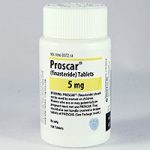
Contents
How Effective Is ART for HIV Infection?
ART for HIV is typically a combination of three or more different antiretroviral drugs that each target the human immunodeficiency virus at different points in its replication in the body.
Antiretroviral therapy (ART) for HIV infection is a treatment regimen used to reduce the viral load in the body. It cannot cure HIV, but it can slow the progression of the infection and reduce the risk of transmission.
HIV antiretroviral drugs work in different ways to control virus proliferation. ART combines multiple medications that target the virus at various stages of its life cycle, improving the chances of reducing the viral load.
ART is started immediately after an HIV diagnosis and is personalized based on factors such as the patient’s other conditions, potential medication interactions, tolerance to side effects, viral drug resistance test results, and convenience of the regimen.
ART is a lifelong treatment that can keep HIV-infected people healthy and active for many years. It is crucial to continue the medication even if the viral load becomes undetectable because interrupting treatment can lead to drug resistance.
What is HIV Infection?
HIV infection is caused by a virus that attacks the human immune system. The virus binds to the CD4 receptor on the surface of T-cells, which are white blood cells that help fight infections.
Once inside the T-cell, the virus replicates and destroys the host cell, gradually weakening the immune system’s ability to defend against infections.
HIV infection can occur through contact with infected bodily fluids such as blood, semen, vaginal fluids, or breast milk. The primary modes of transmission are sexual contact, sharing needles for drug injection, and mother-to-baby transmission during pregnancy, delivery, or breastfeeding.
AIDS is the later stage of HIV infection when the immune system becomes too weak to fight off common infections, making the person vulnerable to certain cancers and tuberculosis.
There are two main types of HIV, HIV-1 and HIV-2, each with multiple groups and strains. HIV-1 is the most common worldwide, while HIV-2 is mainly found in West Africa.
QUESTION
How Effective Is ART for HIV Infection?
Antiretroviral therapy, especially with highly active antiretroviral therapy (HAART), has significantly advanced the management of HIV-1, allowing it to be treated as a chronic disease. In combination with safe and healthy lifestyle habits, ART effectively:
- Controls the infection’s progression
- Improves immune system function
- Reduces HIV-related diseases, improving longevity and quality of life
- Prevents HIV transmission
How Does ART for HIV Infection Work?
ART prevents viral replication in the body, allowing the immune system to recover. It combines drugs that target different stages of the virus’s life cycle.
Viruses, unlike bacteria, cannot multiply on their own and rely on the host cell’s genetic machinery. HIV is a retrovirus that uses reverse transcriptase to convert its RNA into DNA and fuse with the immune cells’ nucleus.
The HIV life cycle includes binding, fusion, reverse transcription, integration, replication, assembly, and budding. Each drug in ART disrupts a different stage, inhibiting the virus’s growth. Mutations may result in drug resistance, requiring alternate drug combinations.
Types of ART for HIV Infection
ART drugs belong to classes such as nucleoside reverse transcriptase inhibitors (NRTIs), non-nucleoside reverse transcriptase inhibitors (NNRTIs), protease inhibitors (PIs), integrase inhibitors (INSTIs), fusion inhibitors (FIs), chemokine receptor antagonists (CCR5 antagonists), post-attachment entry inhibitors, pharmacokinetic enhancers, and complete regimen combination ARTs. The specific combination depends on the patient’s needs and may change due to drug resistance or side effects.
DHHS Guidelines for ART Administration
According to the US Department of Health and Human Services, ART dosages and combinations are recommended for different patient groups, including treatment-naive and treatment-experienced patients. Special groups such as pregnant women, individuals at risk of exposure, adolescents, patients with acute HIV infection, and those with coinfections are also considered. The guidelines are based on clinical trials and expert opinions.
By clicking Submit, I agree to the MedicineNet’s Terms & Conditions & Privacy Policy and understand that I may opt out of MedicineNet’s subscriptions at any time.
Summary
Antiretroviral therapy (ART) is a combination treatment regimen for HIV infection that reduces the viral load in the body. It cannot cure HIV, but it slows disease progression and lowers the risk of transmission. ART involves the use of different classes of antiretroviral drugs to target the virus at various stages of its life cycle. Adhering to ART and adopting a healthy lifestyle are essential for managing HIV infection effectively.


